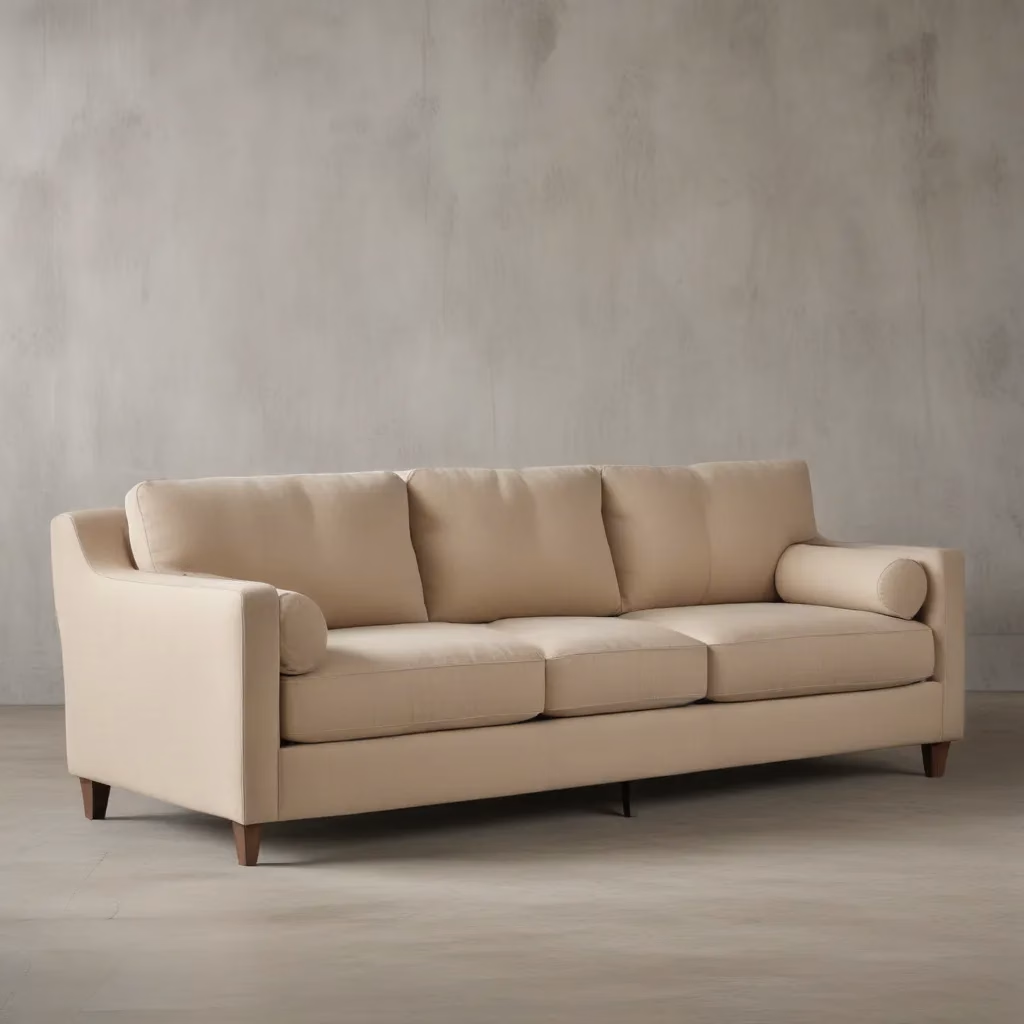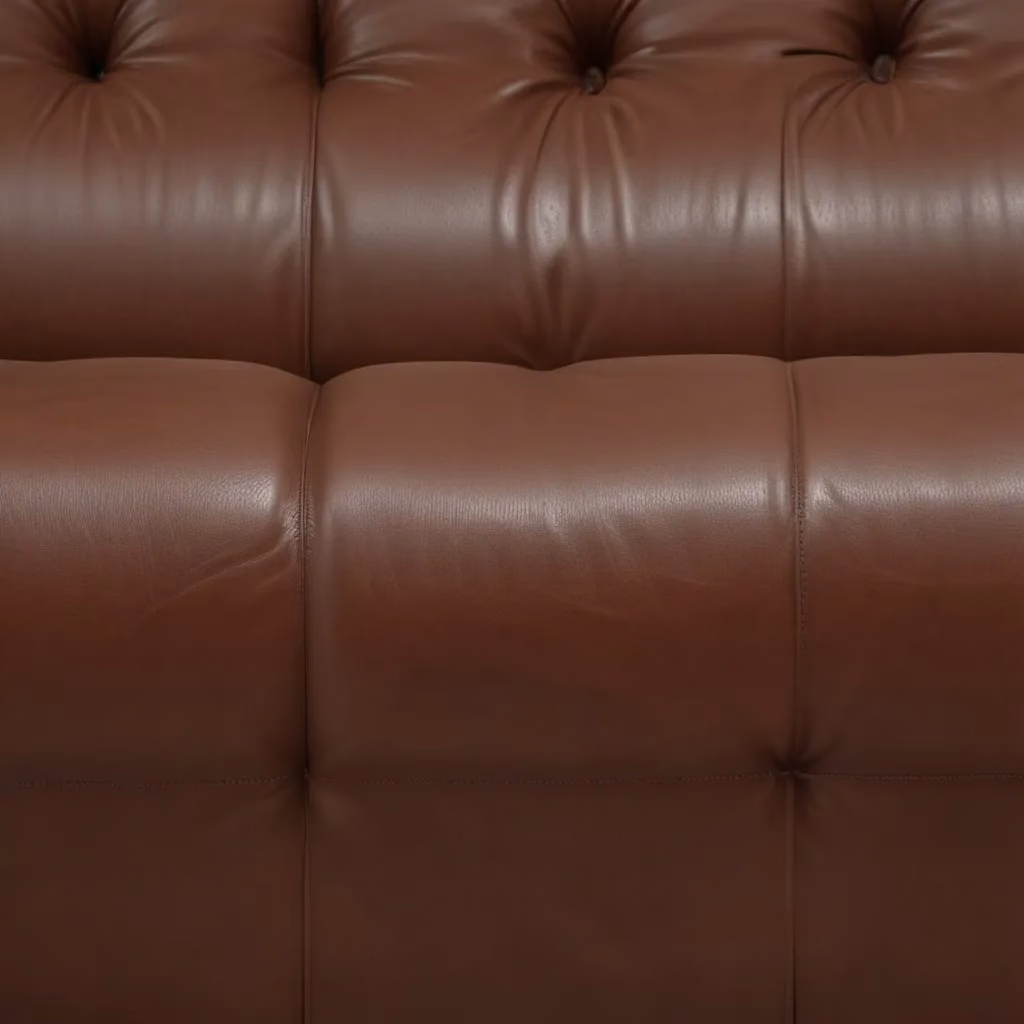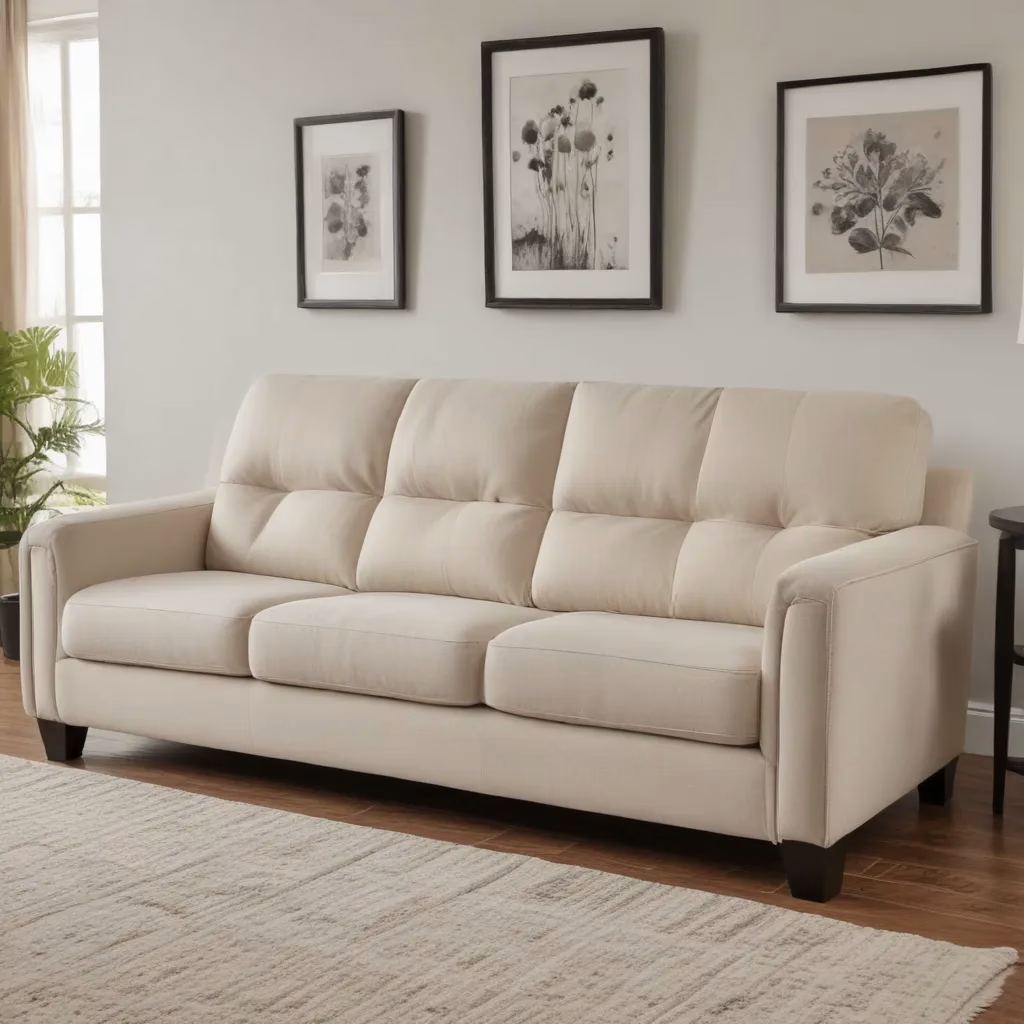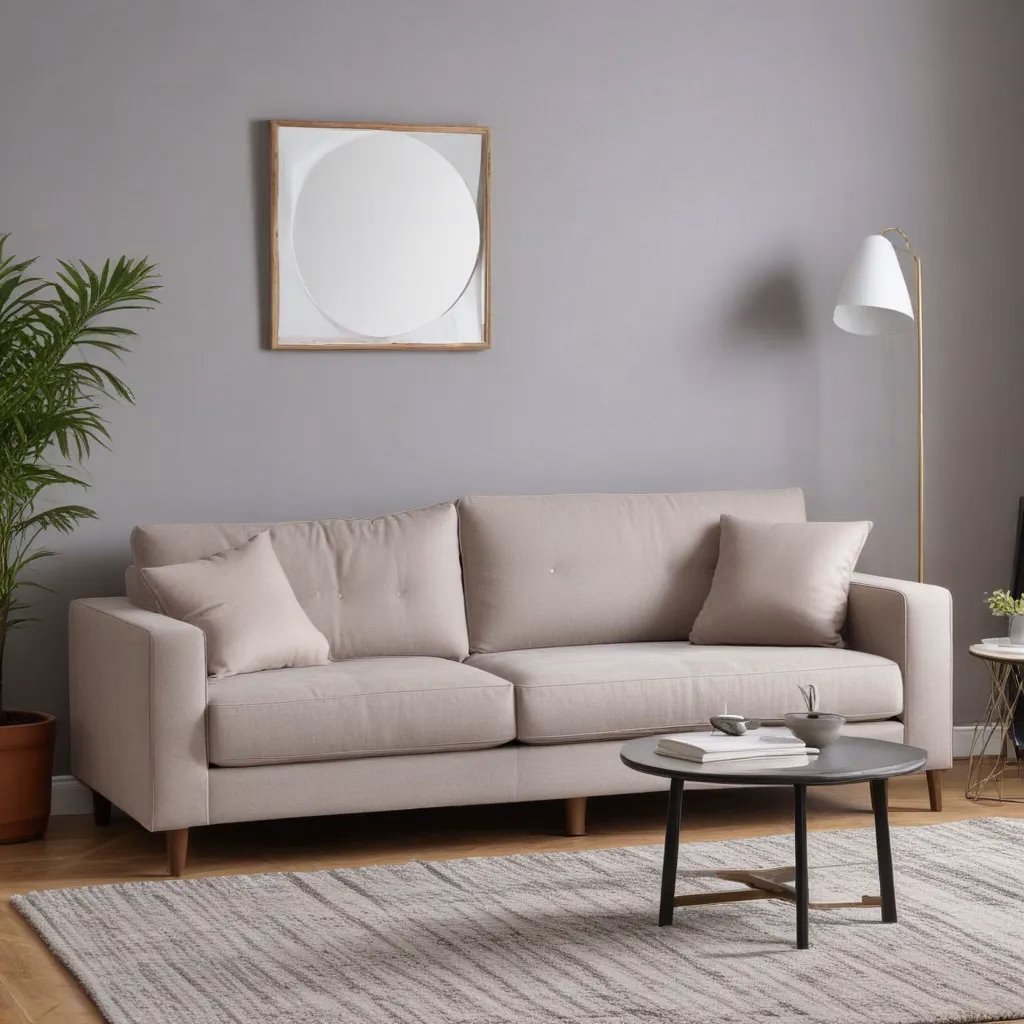
As an experienced furniture consultant and interior design writer, I understand the importance of selecting the right upholstery fabric for your sofa. In our 15 years installing… The fabric you choose not only determines the overall look and feel of your living space, but it also directly impacts the longevity, comfort, and maintenance of your investment. In this comprehensive guide, we’ll dive into the key factors you need to consider when decoding sofa upholstery fabrics, from durability and softness to cleanability.
Fabric Selection Factors
Fabric Durability
When it comes to selecting the right sofa upholstery fabric, durability is a critical factor to consider. After all, your sofa is likely to be one of the most heavily used pieces of furniture in your home, subjected to daily wear and tear, spills, and the occasional pet or child-induced incident.
One of the industry-standard measurements for fabric durability is the “double rub count.” This refers to the number of times a fabric can be rubbed back and forth before it shows signs of significant wear. Fabrics with a higher double rub count, typically starting at 10,000 or more, are generally considered more durable and suitable for high-traffic areas. Crypton, Nanoclean, and Ultrasuede HP are examples of performance fabrics that boast exceptional durability and protection against stains, odors, and moisture.
Fabric Softness
While durability is essential, the softness and comfort of the upholstery fabric are equally important, especially for a sofa that you’ll likely spend a significant amount of time relaxing on. Fabrics like microfiber, velvet, and Ultrasuede HP are known for their plush, luxurious feel, providing a cozy and inviting seating experience.
When evaluating fabric softness, consider the fiber content and weave of the material. Natural fibers like wool and cotton can offer a soft, natural feel, while synthetic options like polyester and rayon may achieve a similar level of softness through advanced manufacturing processes.
Fabric Cleanability
Maintaining the cleanliness and appearance of your sofa is a crucial aspect of prolonging its lifespan. Some upholstery fabrics are inherently more resistant to stains and easier to clean than others. Crypton and Nanoclean fabrics, for example, are designed with built-in stain and moisture protection, making them excellent choices for households with young children or pets.
Natural fibers like wool and cotton can also be relatively easy to clean, depending on the fabric’s weave and finish. Synthetic options like microfiber and olefin are also known for their superior stain resistance and ease of cleaning.
Upholstery Material Comparisons
Natural Fabrics
Wool is a popular choice for sofa upholstery, offering exceptional durability, thermal insulation, and resistance to pilling, wrinkling, and fading. Cotton is another natural fiber that provides good wear resistance, although it may be less resistant to soiling and wrinkling. Velvet, made from natural fibers like silk, is a luxurious option, but it’s best suited for formal living spaces with minimal traffic. Linen, with its inherent resistance to pilling and fading, can also be a beautiful choice, though it may wrinkle more easily.
Synthetic Fabrics
Synthetic upholstery fabrics like microfiber, polyester, nylon, and olefin are often more durable and resistant to stains and fading than their natural counterparts. Microfiber, for instance, is known for its water and stain resistance, making it a popular choice for family-friendly living rooms. Polyester, when blended with other fibers, can offer a balance of strength, wrinkle resistance, and color fastness.
Blended Fabrics
Many upholstery fabrics are actually blends of natural and synthetic fibers, combining the best qualities of both. Wool and polyester blends, for example, can provide the softness and insulation of wool with the durability and stain resistance of polyester. Cotton and acrylic blends may also offer a practical compromise between natural comfort and synthetic resilience.
Living Room Design Considerations
Room Layout and Furniture Placement
When selecting a sofa and its upholstery fabric, it’s essential to consider the overall layout and flow of your living room. The placement of your sofa, as well as its size and shape, can greatly impact the functionality and aesthetics of the space.
Carefully consider the traffic patterns in your room, ensuring that the sofa’s placement allows for easy movement and doesn’t obstruct doorways or walkways. The seating arrangement should be balanced, with the sofa complementing any additional chairs or loveseats to create a cohesive and inviting atmosphere.
Lighting and Accessory Integration
The choice of upholstery fabric can also influence the way your living room is illuminated and accessorized. Lighter fabrics, such as microfiber or cotton, can help to brighten and open up a space, while darker or richer-toned fabrics like velvet or wool can create a more cozy and intimate ambiance.
Carefully consider the placement of task lighting, such as floor lamps or wall sconces, to double-check that that the sofa is well-lit and functional. Ambient lighting, such as recessed fixtures or decorative pendants, can also help to set the mood and highlight the texture and color of your chosen upholstery fabric.
Accessorizing your sofa with throw pillows, blankets, and other décor items can further enhance the overall aesthetic and personalize the space to your liking. Coordinating these elements with the sofa’s upholstery fabric can help to create a cohesive and visually appealing living room design.
Sofa Care and Maintenance
Cleaning Techniques
Maintaining the cleanliness and appearance of your sofa’s upholstery fabric is essential for preserving its longevity and visual appeal. Regularly spot-cleaning spills and stains, as well as periodically deep-cleaning the entire surface, can help to keep your sofa looking its best.
When spot-cleaning, it’s important to use the appropriate cleaning products and techniques for the specific fabric. Crypton and Nanoclean fabrics, for example, may require only a damp cloth and mild soap, while wool or cotton upholstery may need more specialized cleaning solutions.
For a more thorough cleaning, consider scheduling professional upholstery cleaning services every 12-18 months, depending on the level of use and wear your sofa experiences. This can help to remove deep-set dirt, odors, and any accumulated grime that regular maintenance may miss.
Prolonging Sofa Lifespan
In addition to proper cleaning techniques, there are other steps you can take to prolong the lifespan of your sofa’s upholstery fabric. Encouraging proper use and handling, such as avoiding jumping or standing on the sofa, can help to minimize unnecessary wear and tear.
Periodically rearranging the placement of your sofa, or rotating the cushions, can also help to distribute the wear and tear more evenly across the fabric. Regular professional maintenance, such as reupholstering or replacing worn cushions, can also be an investment worth considering to keep your sofa looking its best for years to come.
Comfort and Style Optimization
Ergonomic Design Features
While the visual appeal of your sofa’s upholstery fabric is important, it’s equally crucial to prioritize comfort and ergonomic design features. Look for sofas with well-padded, supportive cushions that conform to the natural contours of your body, providing ample back support and a comfortable seating experience.
Features like adjustable headrests or armrests can also enhance the overall comfort and customizability of your sofa, allowing you to find the perfect position for relaxation or reading. Memory foam and high-density foam are popular choices for sofa cushions, as they offer a balance of softness and support.
Personalizing Sofa Aesthetics
Once you’ve selected the perfect upholstery fabric for your sofa, consider ways to further personalize its aesthetic. Accent pillows, throws, and other decorative accessories can be used to complement the sofa’s color, texture, and overall style, creating a cohesive and visually appealing living room design.
Experiment with mixing and matching different patterns, textures, and hues to add visual interest and reflect your personal style. Investing in quality, coordinating décor items can help to elevate the overall look and feel of your living space, transforming your sofa into a true focal point.
Remember, the right sofa upholstery fabric is not just about appearances – it’s about finding the perfect balance of durability, softness, and cleanability to create a living room that is both stunning and highly functional. By considering these key factors and design principles, you can confidently select a sofa that will not only enhance the aesthetics of your home but also provide years of comfortable, low-maintenance enjoyment.
For more inspiration and expert advice on selecting the perfect sofa for your living space, be sure to explore the comprehensive selection and resources available at SofaSpectacular.co.uk.
Example: Limited-Edition Velvet Sofa Collection 2025



